Bald Eagles are large raptors with impressive aerial maneuvers — and you can see them in habitats along Falls Lake and Jordan Lake.
by Mike Dunn
I’ve been fascinated by our national symbol, the Bald Eagle, since my teenage years. Back then, my family had a cottage on a tidal tributary of the Potomac River near Stafford, Virginia. Bald Eagles were quite rare in the East, but we were fortunate to have a nest across the water from our place. I was always thrilled to see them flying over or catching fish when I was out in my canoe. They’re large raptors, but capable of some impressive aerial maneuvers. To be able to observe them was quite a privilege, especially back then.
Then some 40 years ago, I was lucky enough to be present when a juvenile eagle was released at Lake Mattamuskeet, on the North Carolina coast, as part of a statewide reintroduction effort. Everyone involved was nervous when the first juvenile left its enclosure and flew out over the lake. But it was also thrilling to witness what would be the start of this species’ comeback to our state.
Thanks to protection and conservation efforts, Bald Eagle populations have rebounded, and they now are commonly seen near large bodies of water throughout almost all of North America. Here in the Piedmont, Falls and Jordan Lakes provide great eagle habitats since they are large, shallow lakes with good fish populations and an abundance of protected, forested shoreline. Back when I worked at the North Carolina Museum of Natural Sciences, I frequently spotted eagles perched in dead snags or soaring over Jordan Lake on my commute from Pittsboro to Raleigh.
A few years ago, I started seeing great photos on social media of eagles and other fish-eating birds taken at the B. Everett Jordan Dam. There, they would concentrate to feed on fish stunned by their passage through the dam’s turbines. On my first visit, I saw three or four eagles either perched or actively fishing in the tailrace below the dam.
So last February, with lake levels high and lots of water being discharged through the dam, I drove the 25 minutes from our house over to the dam again. My plan was to go over in the early morning hours, stay a couple of hours, then head home before lunch.
There were already a handful of bird watchers, photographers and anglers strung out along the banks when I arrived. Looking downstream, I could see a large number of Bald Eagles roosting in trees on both sides of the tailrace.
Steve McMurray, a ranger at Jordan Lake State Recreation Area, shared that the lake is now home to over 25 eagle nests, and he estimates the winter population at more than 60 eagles, with perhaps double or triple that number in the summer. I counted over 40 on this visit, many more than when I had visited the year before. But what really thrilled me were the sounds — so many eagles calling! Bald Eagle vocalizations are not well known by most people; it’s a squeaky “Ki-ki-ki-ki-ki-ki-ker” that sounds more like a seagull than a majestic bird. (In many movies and television ads that show an eagle flying, it’s paired with the sound of a Red-tailed Hawk’s scream).
The eagles I saw were a mix of juveniles and adults. It takes four to five years for a Bald Eagle to acquire the signature white head and tail feathers. Juveniles are generally dark brown, with variable amounts of whitish mottling on their undersides. The beak is dark in the first year or two, gradually changing to the all-yellow bill of the adult bird. The head and tail feathers transition to pure white and the mottling disappears to leave a solid dark brown body by year five or six.
Bald Eagles are superbly adapted to finding prey and catching it. The eyes of an eagle are one of its most impressive features. They are almost the same weight as a human eye, even though an adult eagle might weigh only 10 to 14 pounds. No one knows exactly how much better an eagle can see than us, but estimates range anywhere from four to eight times the visual acuity of a human. Another notable feature is the Bald Eagle’s impressive beak. The beak (as well as the talons) is made of keratin, similar to our fingernails.
It has a hooked tip and large size relative to the bird’s head. Its talons are also well-adapted to grab slippery prey like fish: they’re strongly curved and the bottom of their feet have rough projections that help hold the prey firmly.
The crushing strength of each talon is estimated to be at least 400 pounds per square inch, easily killing their prey (that is at least 10 times stronger than the average grip strength of a human hand). But the talons can also be used for a delicate operation like preening feathers.
Given their large size (wingspan exceeds 6 feet) and superb predator adaptations, Bald Eagles can easily dominate the scene at a carcass or feeding area. They’re also happy to steal their prey from other predators, like cormorants and osprey. If a cormorant doesn’t swallow a fish right away (crappie, the dominant fish I saw by the dam, are fairly deep-bodied, so it can be tough to get the whole fish down), the eagles perched nearby or soaring overhead take notice.
An eagle may dive-bomb a cormorant, causing it to hastily drop its meal. The eagle then swoops in, talons down, snags it off the surface, and flies off to a nearby tree to dine on its stolen prey. As for the osprey, Bald Eagles may also nab a fish in midair from their raptor cousins, which is always an aerial display worth seeing.
What I’d planned as a two-hour photo trip turned into an all-day event that had me twisting and turning at times to try to catch the action. It was a thrilling day of observing some of the large concentration of Bald Eagles that call Jordan Lake their winter home.
This article originally appeared in the February 2024 issue of WALTER magazine.

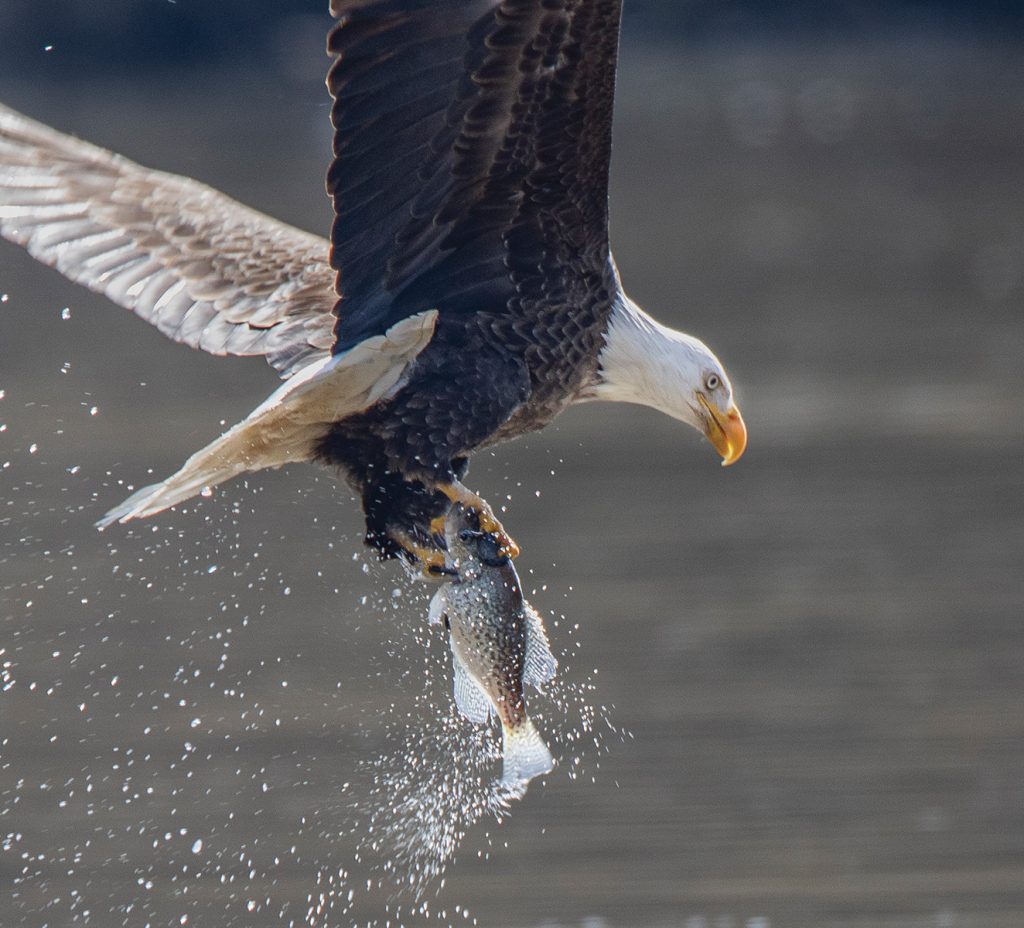
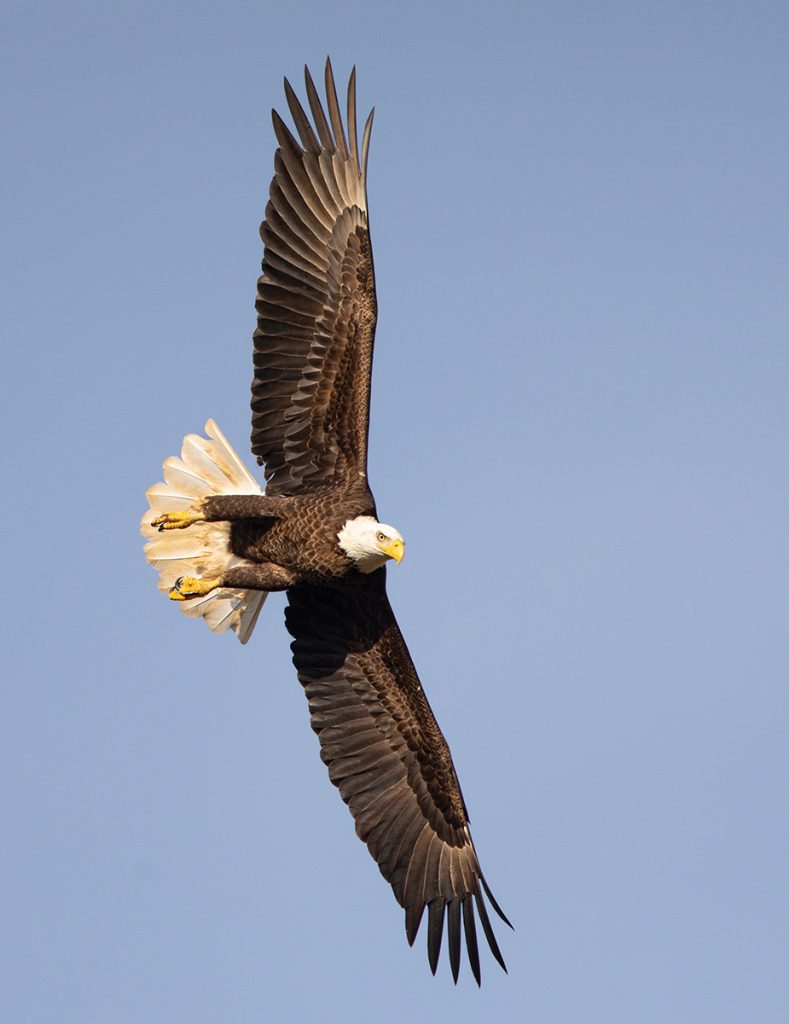
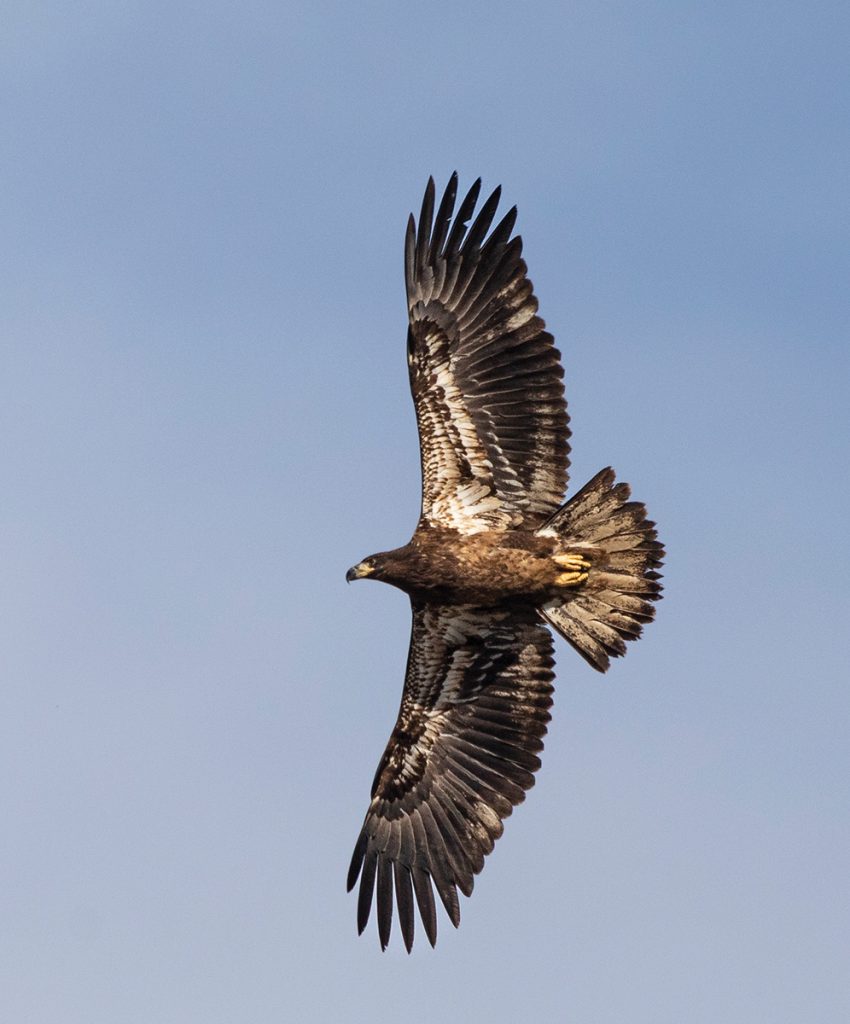

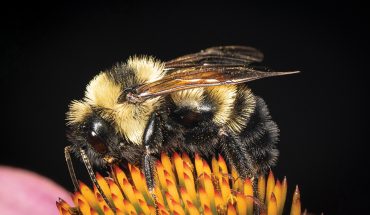
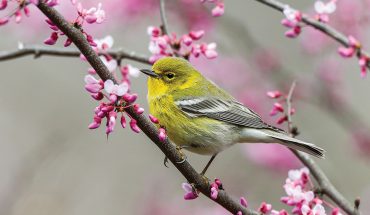

Pingback: An Eye on Eagles in North Carolina | Dailywise